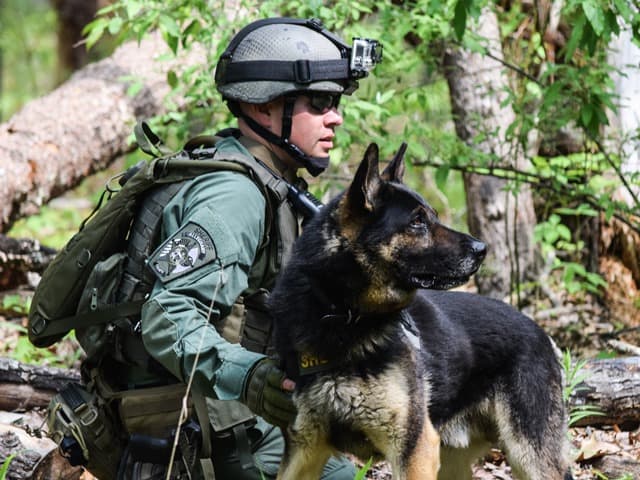The military has been utilizing canines to assist in a variety of operations since the Second World War. After over 70 years of successful service, many people are interested in learning more about the care and training of the dogs that serve alongside our troops. One of the questions that often arises is whether or not military working dogs are neutered. This is a complex issue that requires a closer look.
In this blog post, we’ll explore the pros and cons of neutering military working dogs and discuss the role of the U.S. military in making decisions about the health and behavior of these special animals. We’ll also discuss the impact on the dogs’ overall wellbeing and how neutering affects their physical and mental health. By the end, readers should have a clearer understanding of why neutering military dogs is sometimes necessary and the role of the U.S. military in making decisions about the health and behavior of these animals.
Where Do Police Dogs Come From?
Police departments get police dogs from different sources. A significant source of American police dogs, despite some being donated or bought locally, is Europe. Breeders in Europe assess prospective police dogs based on a core set of characteristics. They only breed very particular dogs and only if they possess all necessary characteristics. The police dogs are also trained by well-known organizations with a global reputation, where they can obtain an international certification. One such program is the Dutch Police Dog Association.
Unfortunately, importing a police dog is very expensive; it typically costs several thousand dollars. The good news is that a good police dog will eventually pay for itself.
What can police detection dogs smell?
Detection dogs can sniff virtually anything they are trained for. The key is in the training method, whether they are taught to detect drugs, explosives, or even a human scent.
Police dogs must first master obedience training and sociability testing before advancing to rigorous agility and endurance tests and receiving specialized training for their line of duty. At Highland Canine, we have developed a secure and efficient program that fully addresses these components.

How long does it take to train a police dog?
Whilst it varies from location to location, at Highland Canine, our program takes us 16 weeks to train a police dog (with an additional four weeks to train the handler).
FAQ
Do military dogs have to be neutered?
Additionally, cats and dogs must be spayed or neutered before boarding in order to use Dogs on Deployment’s network of boarding facilities. To date, Dogs on Deployment has donated nearly $15,000 to help 150 military pet owners get their animals altered at low or no cost.
Why are male police dogs not neutered?
Additionally, intact male dogs are more effective at performing tasks than neutered male dogs. This could be as a result of castration, which has a detrimental effect on canine behavior.
Can unneutered dogs be service dogs?
In addition to many pet dogs in the U. S. dogs used as service animals are frequently gonadectomized; Assistance Dogs International, an accreditation body, stipulates in its training standards that service animals must be spayed or neutered (8).
Are all K9 police dogs male?
K9 dogs are either male or female dogs. Mostly, it depends on what the future canine dog will be used for. Most K9 dogs that are used are male dogs. However, more and more female dogs are employed as K9 dogs.
